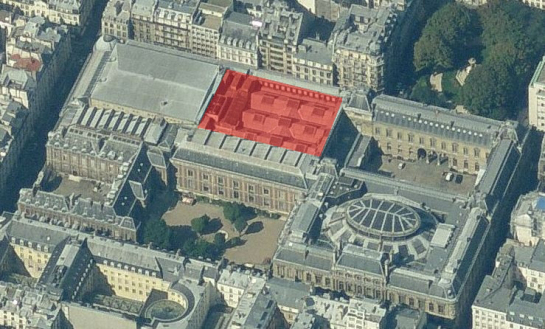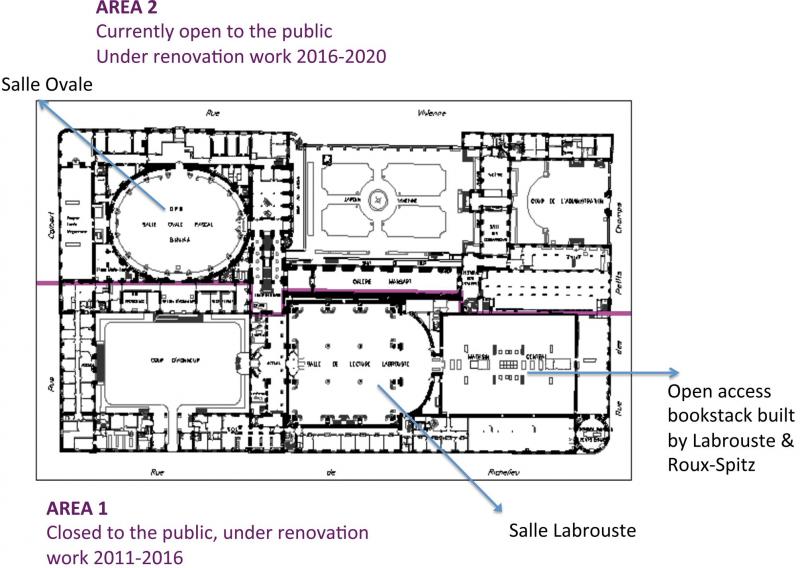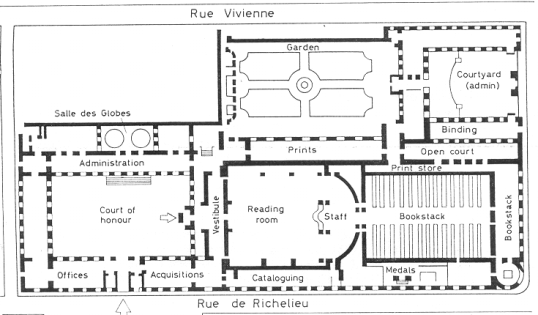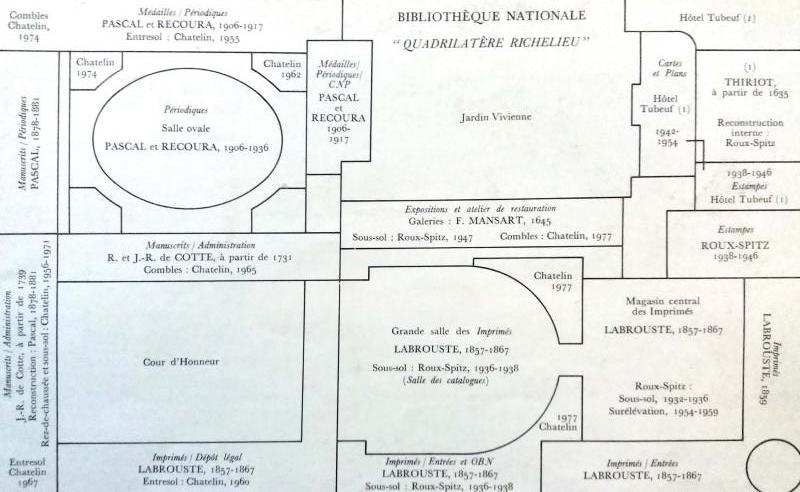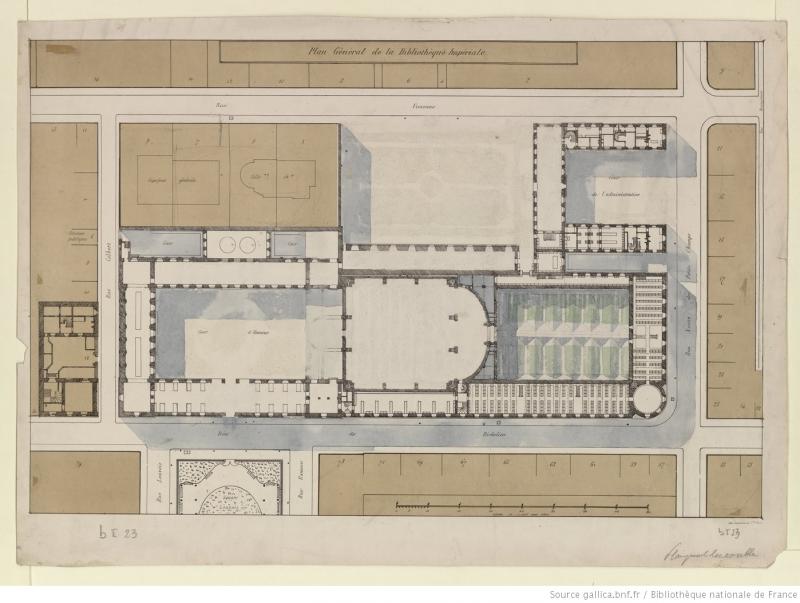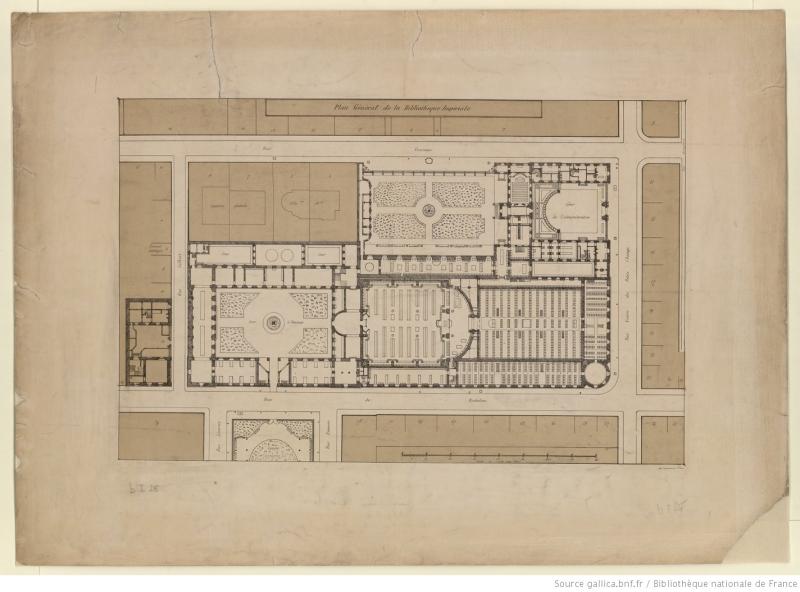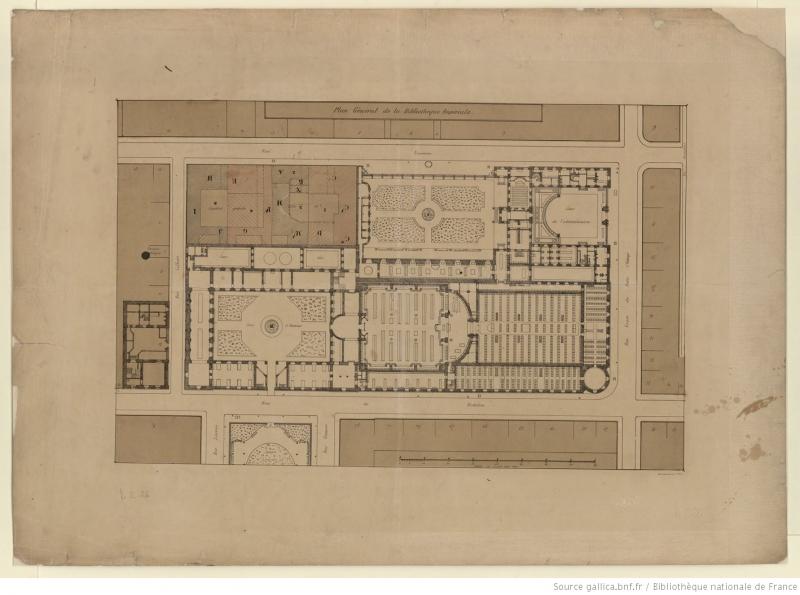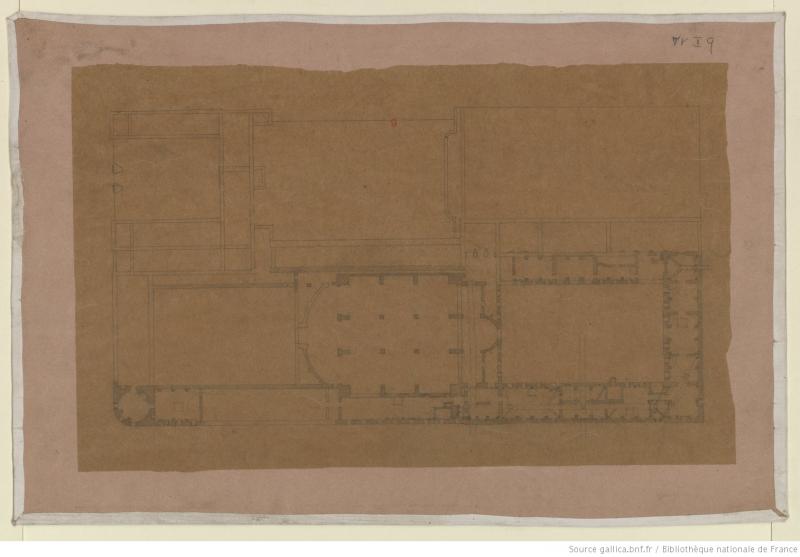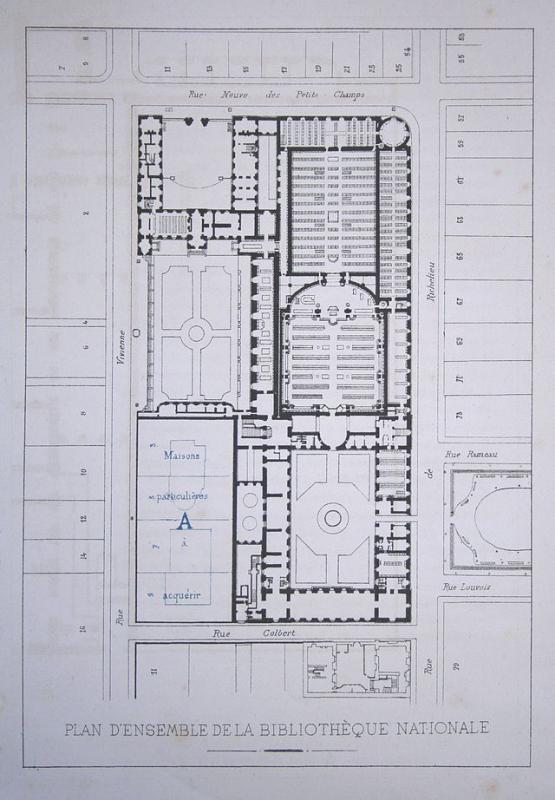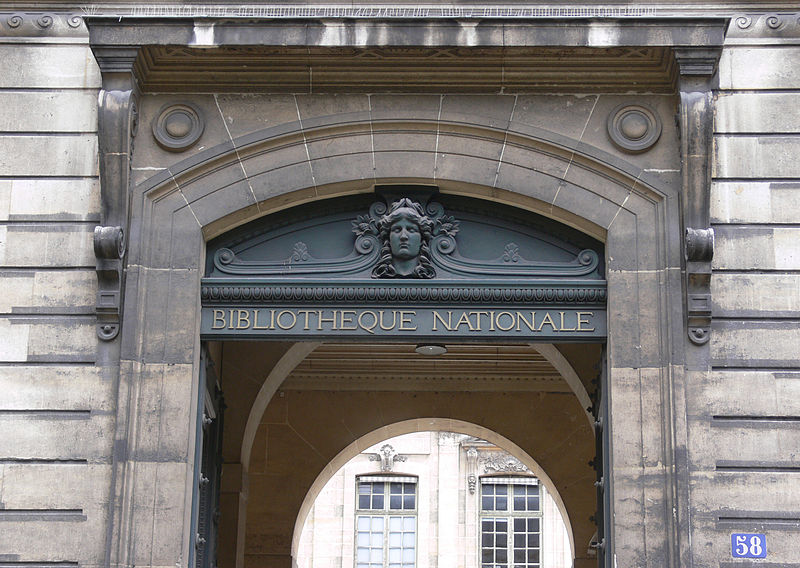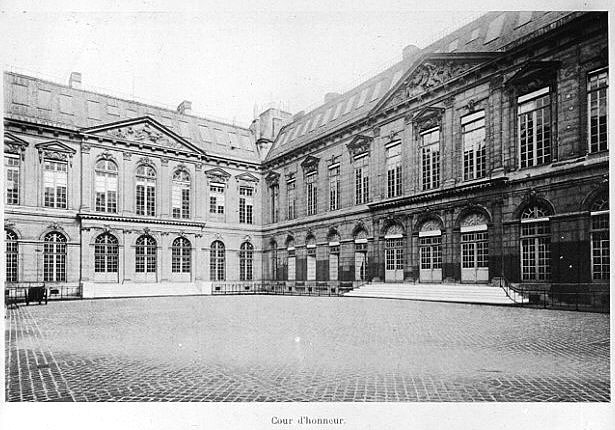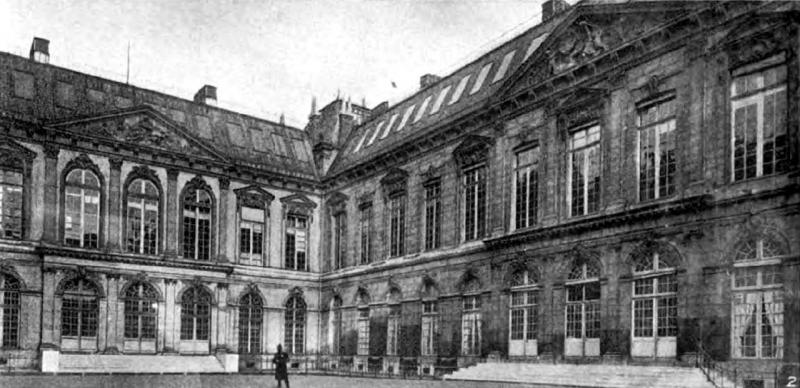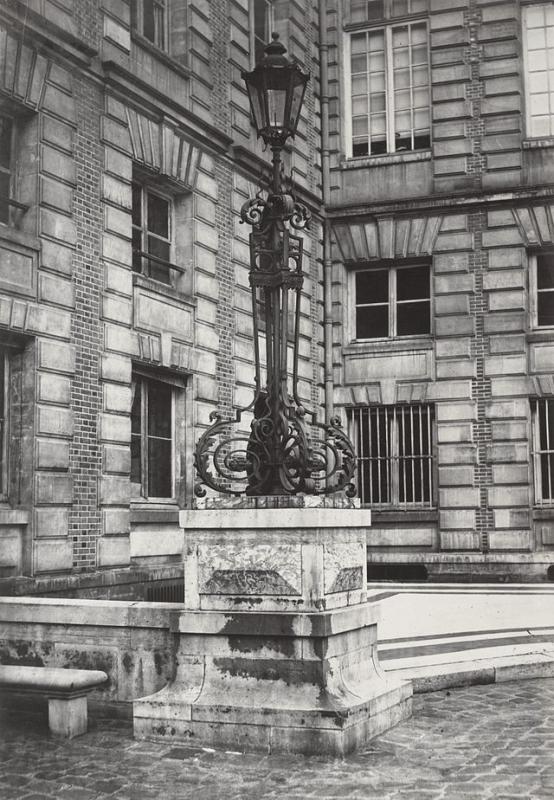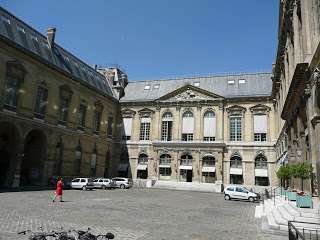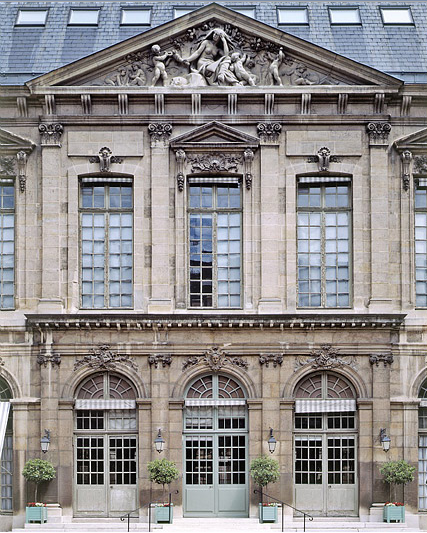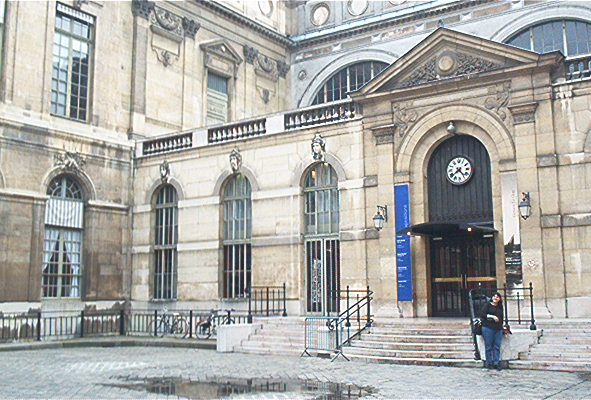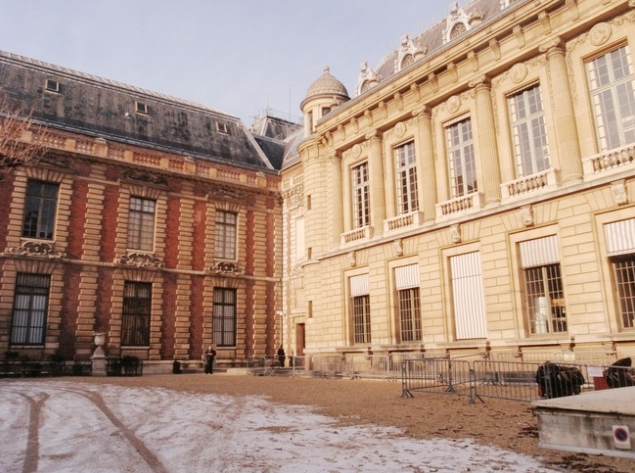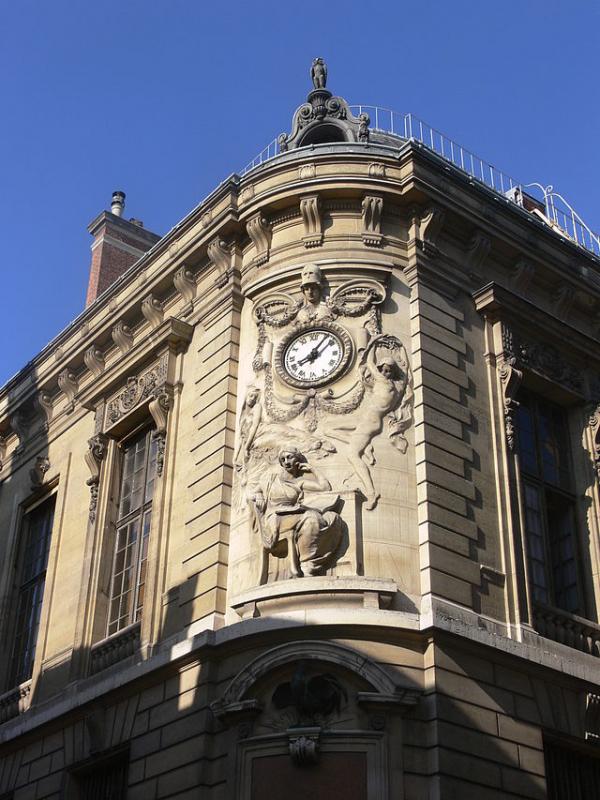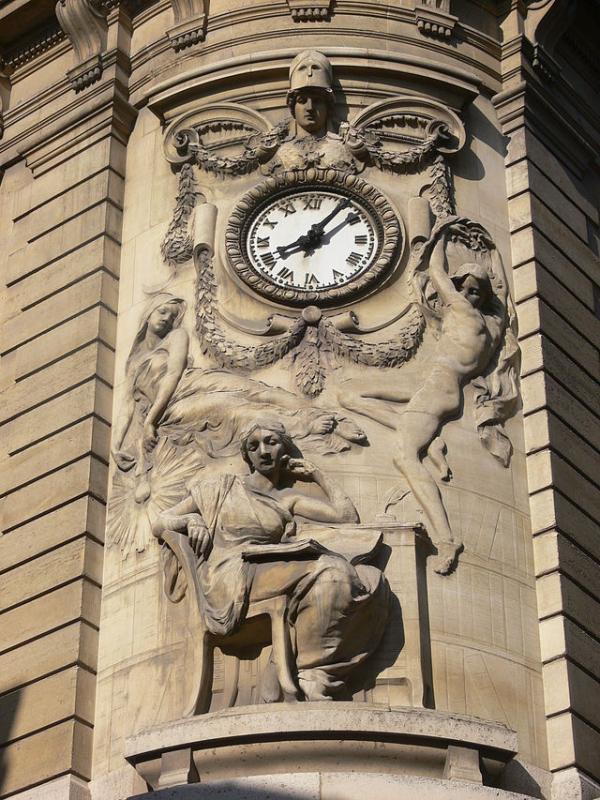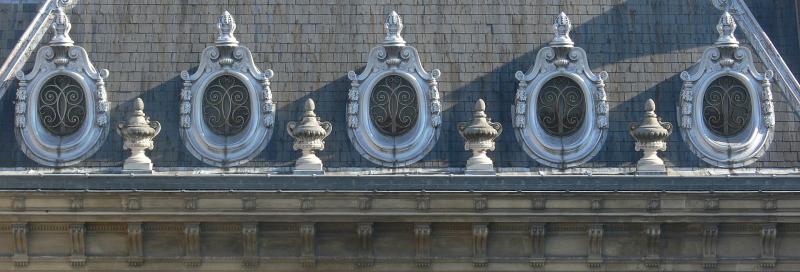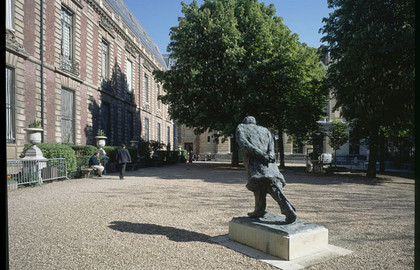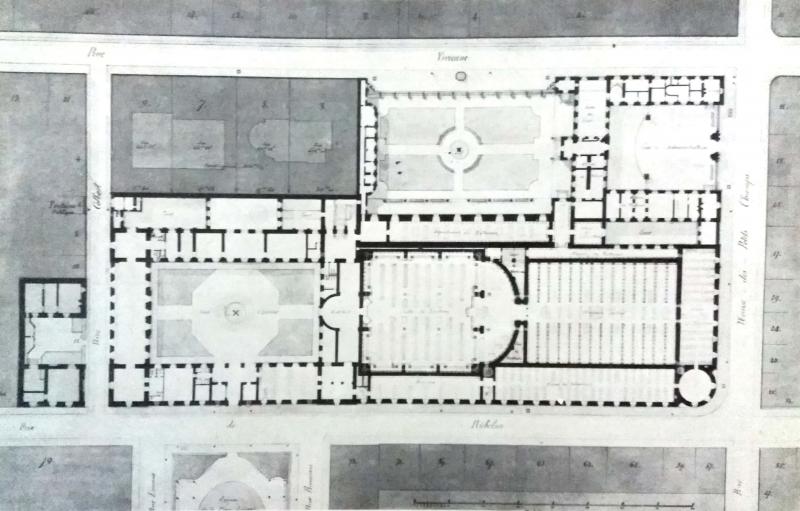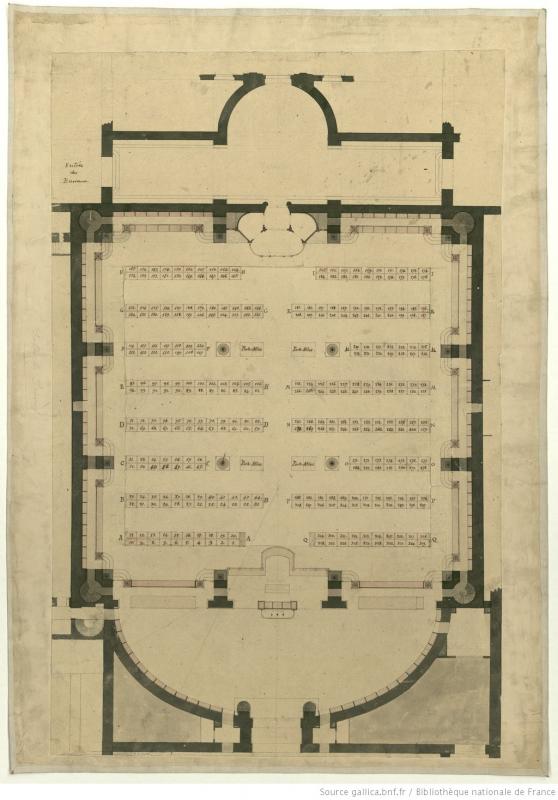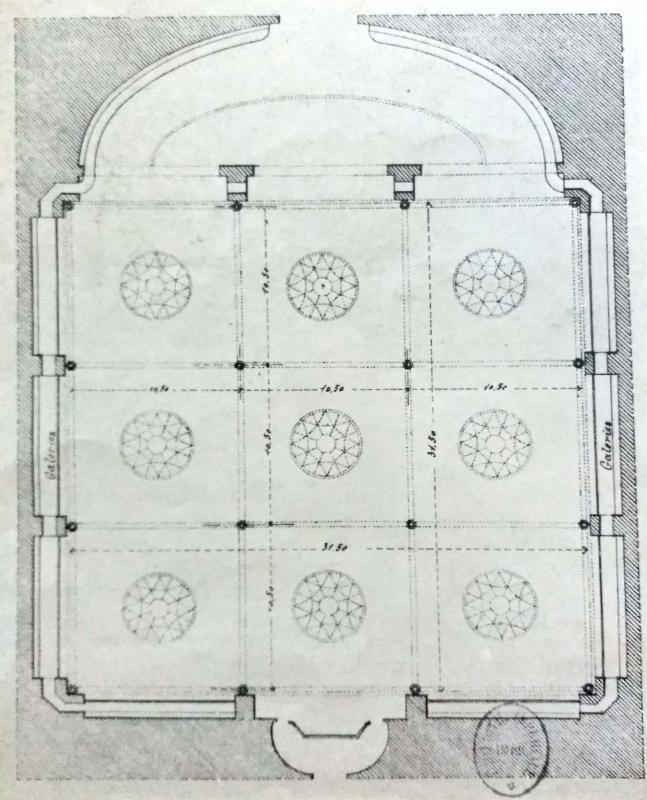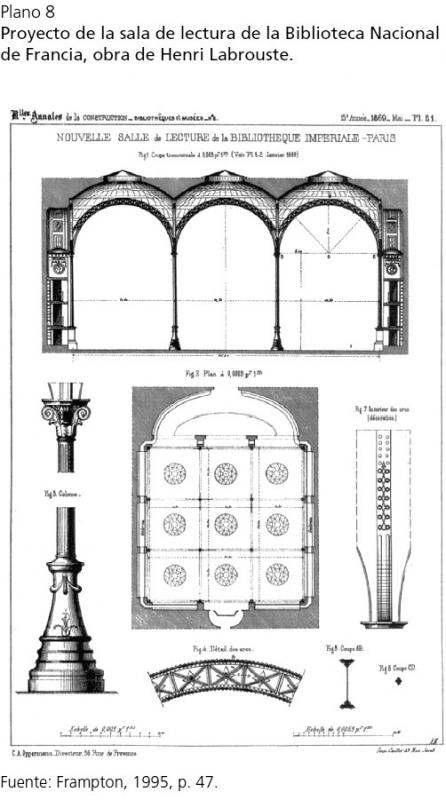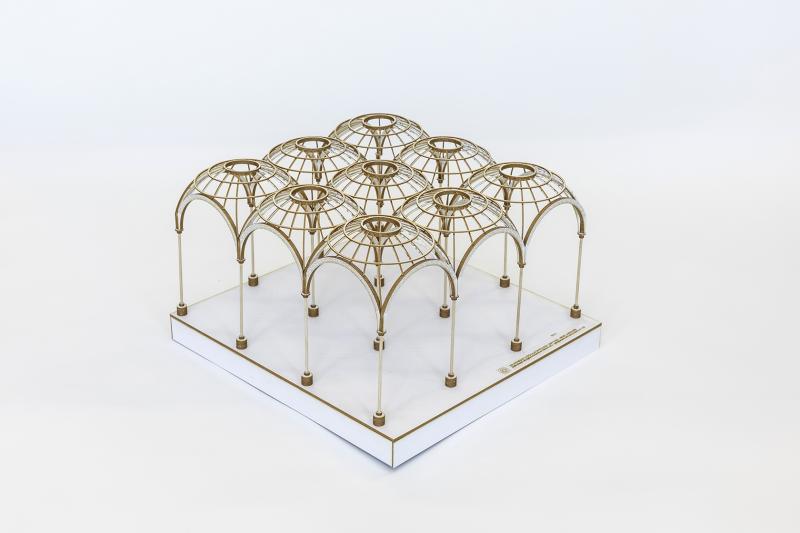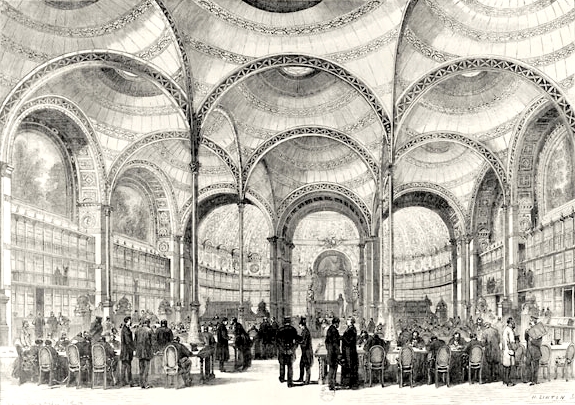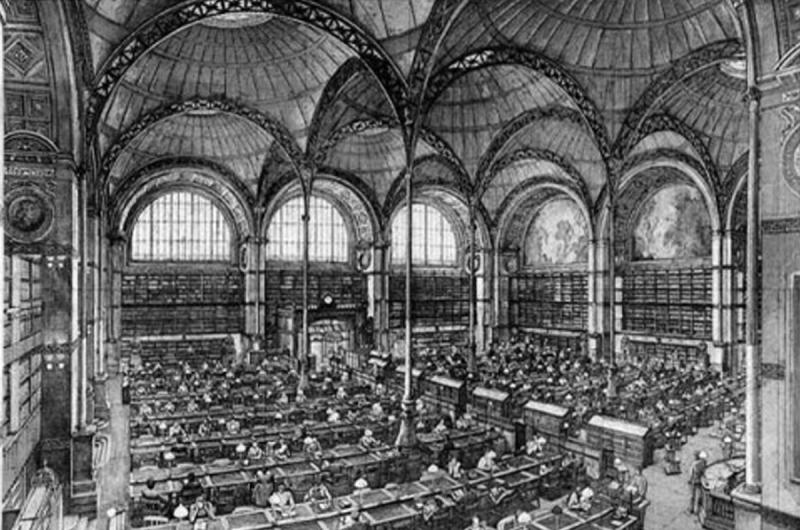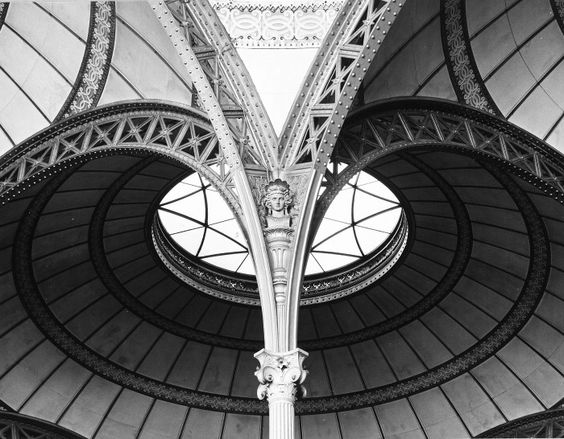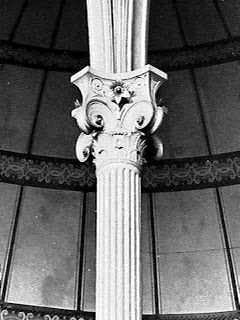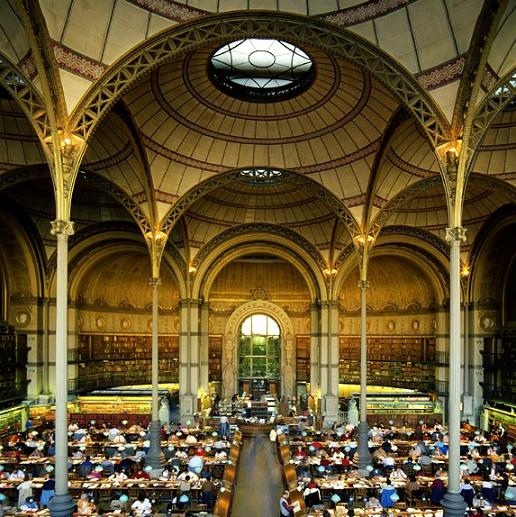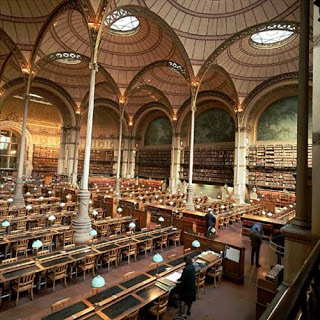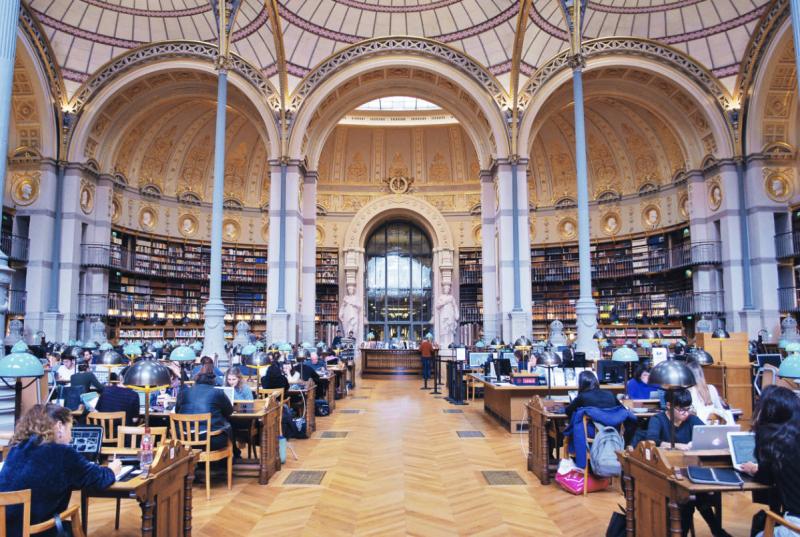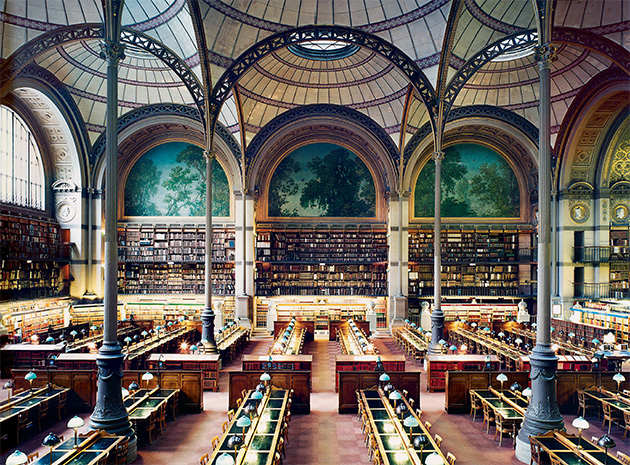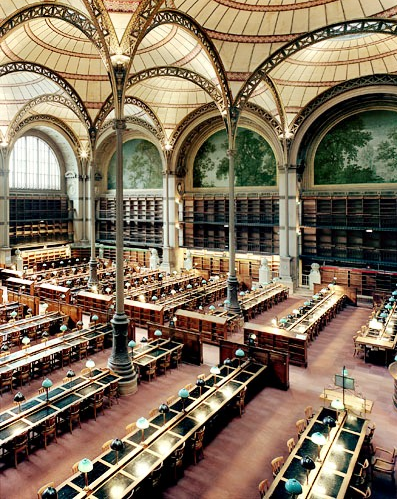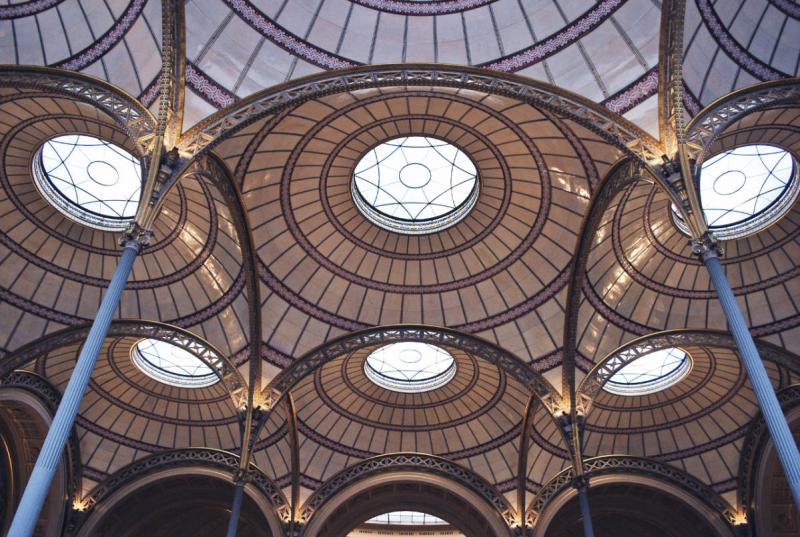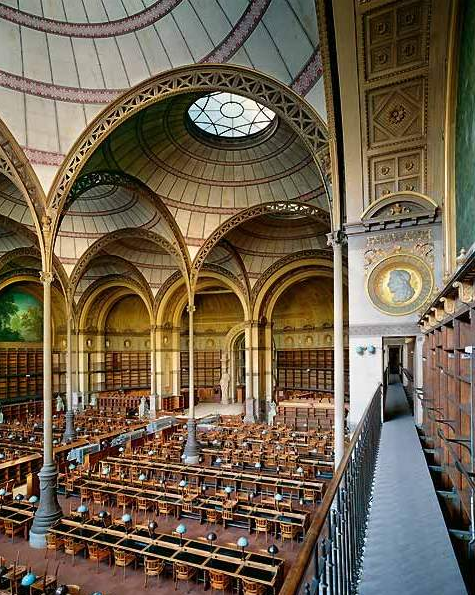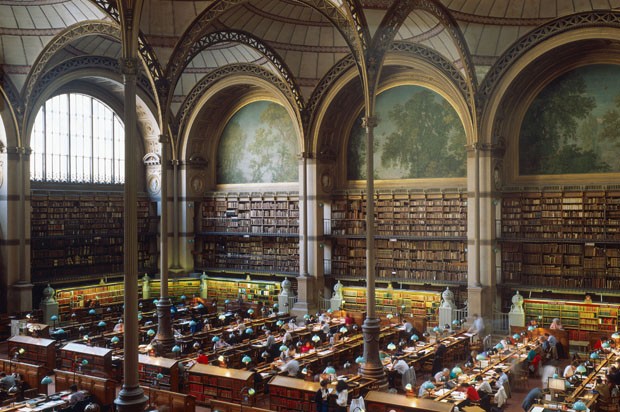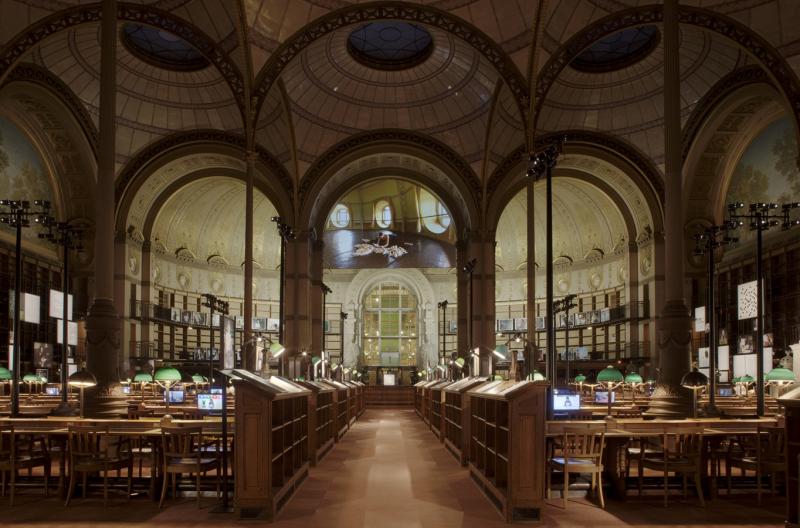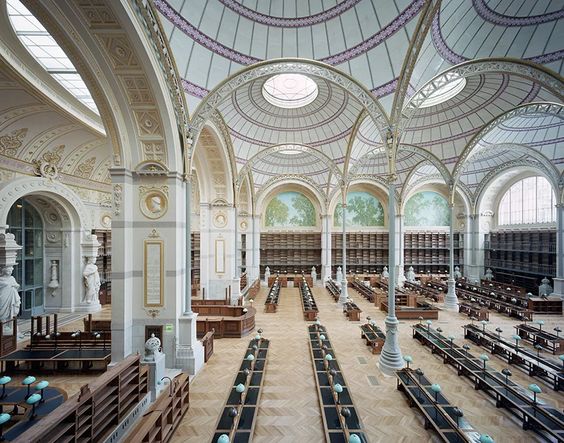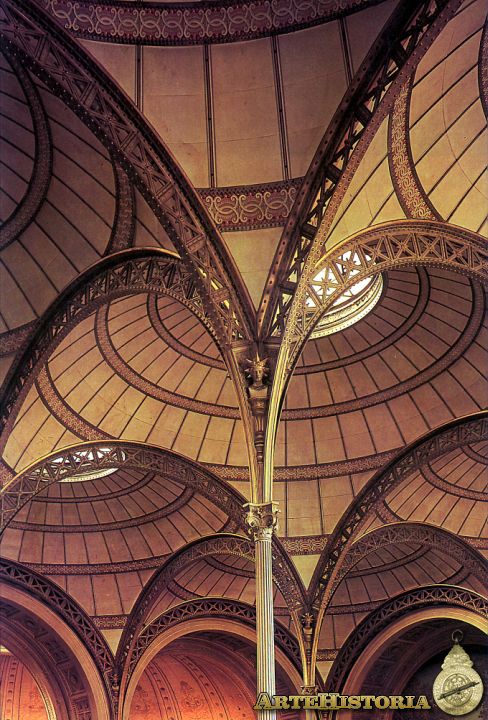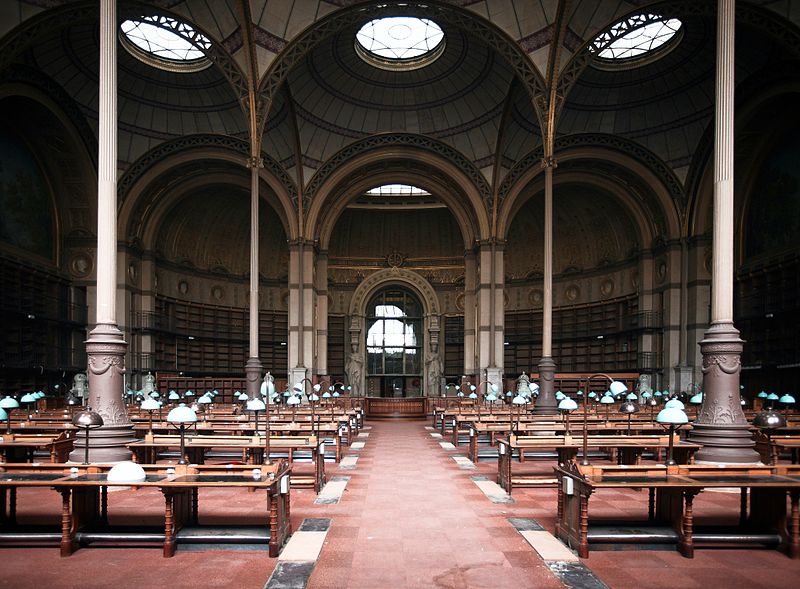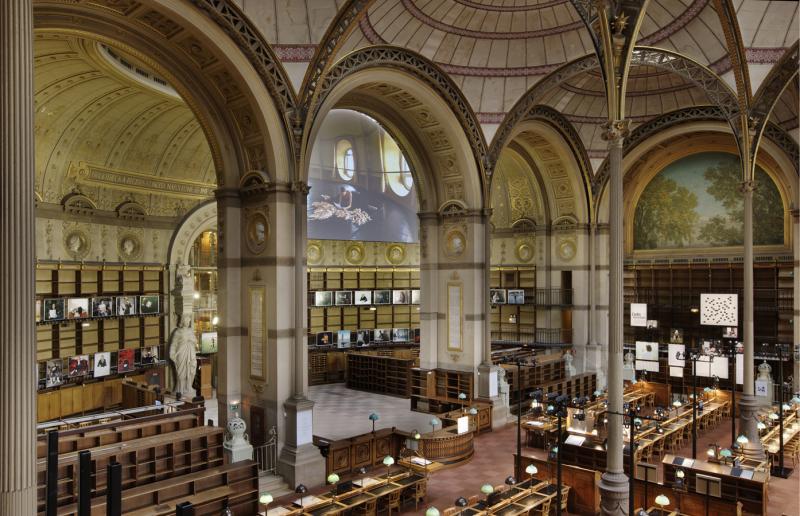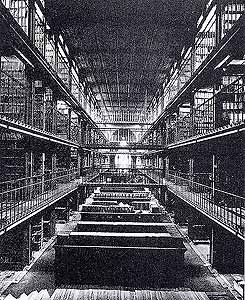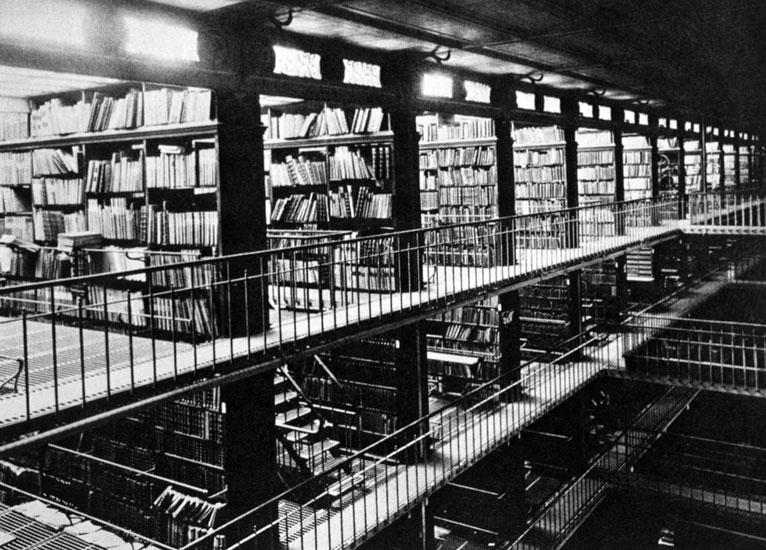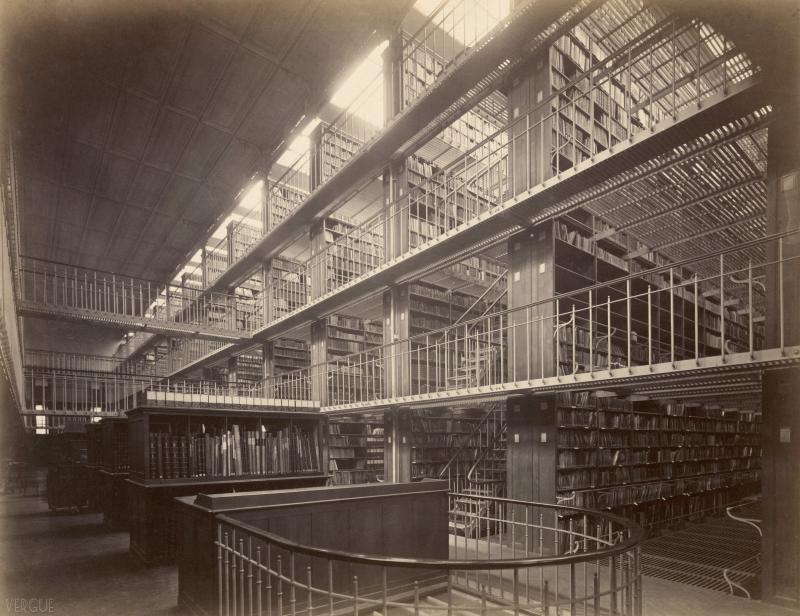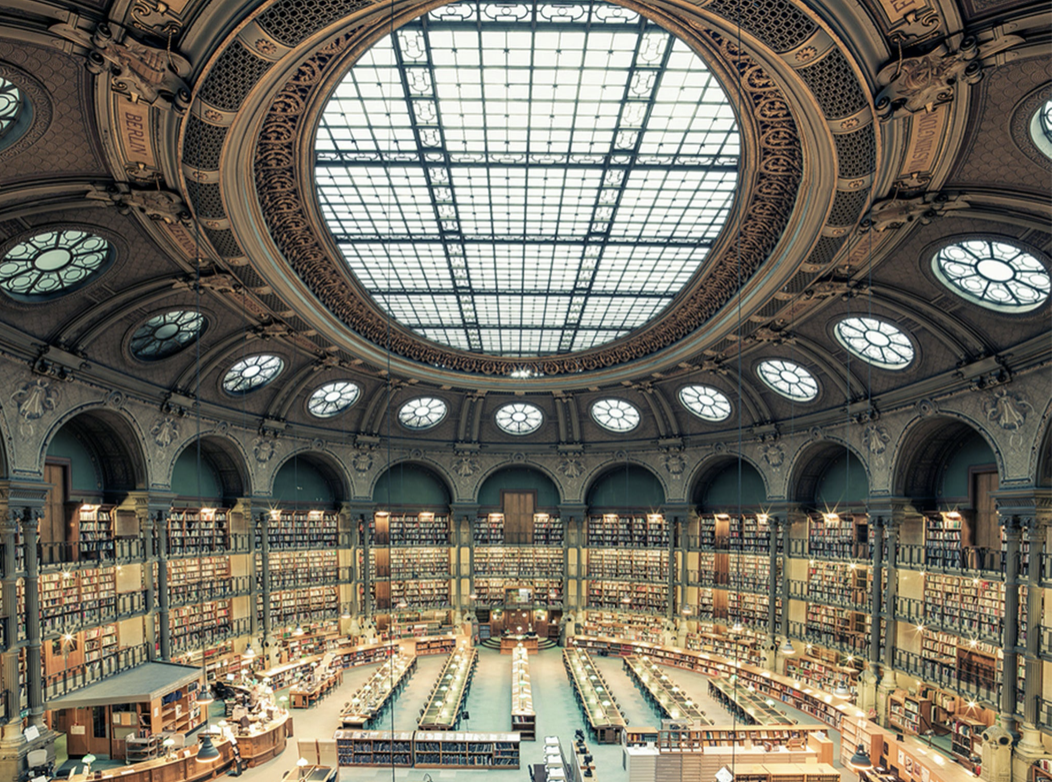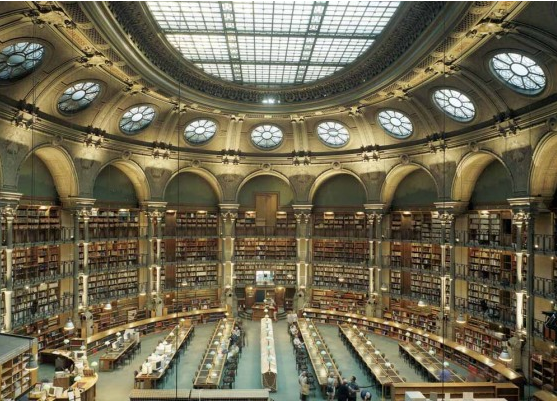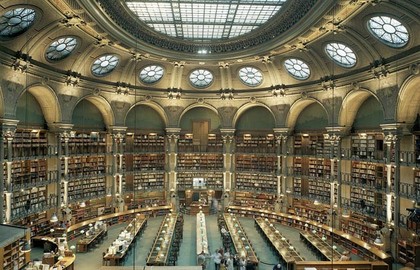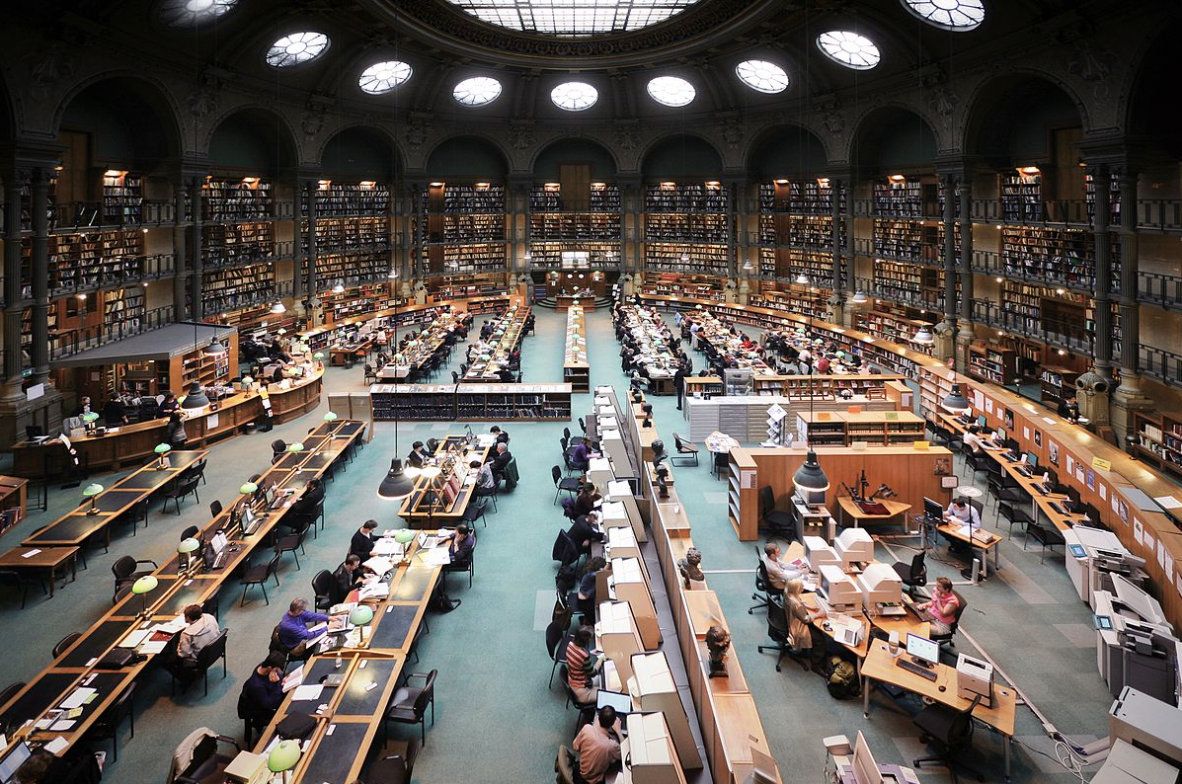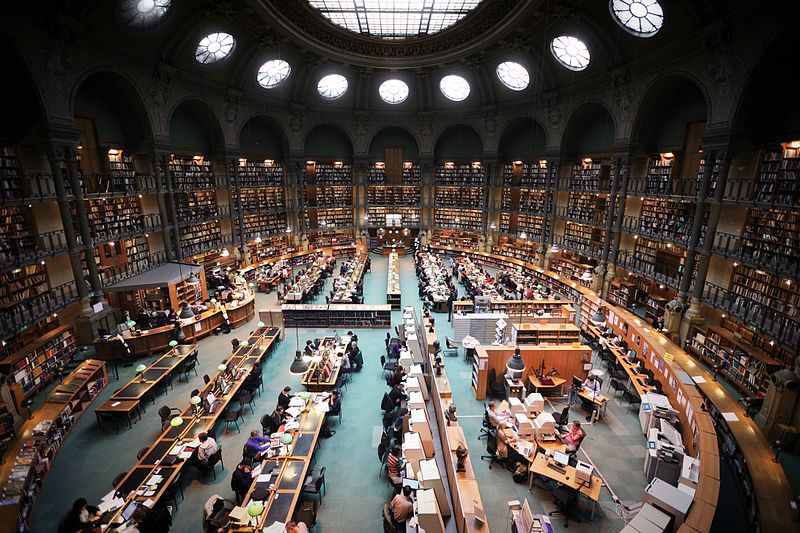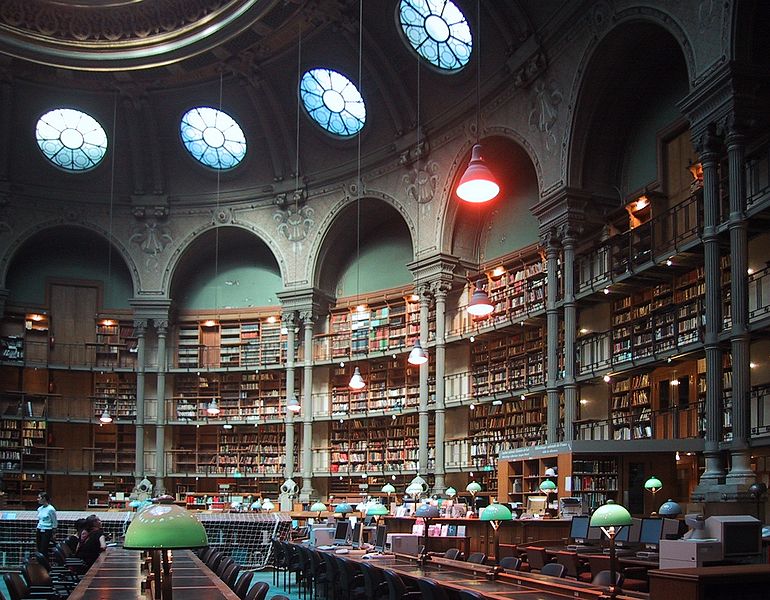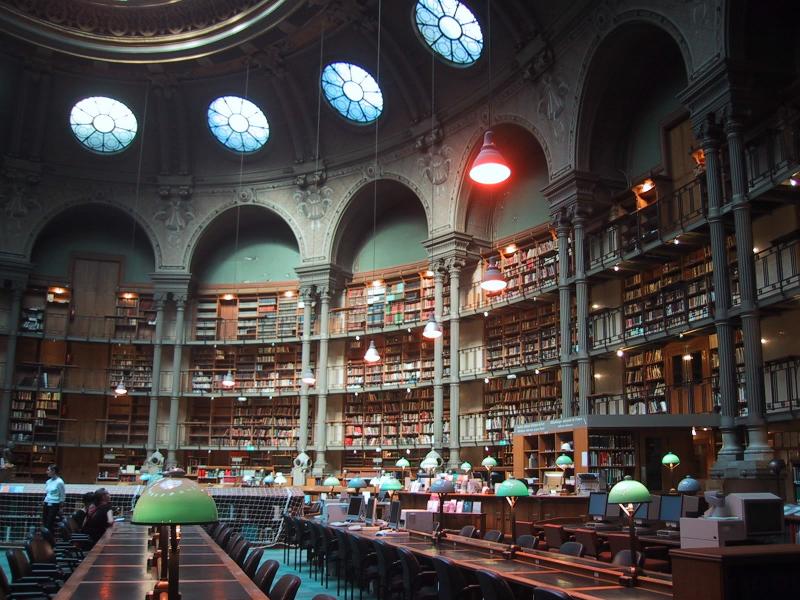Inprimatu


National Library of Paris / Biblioteca Nacional de Paris
- 1853 - 1869
- LABROUSTE, Pierre François Henri
- París
- Francia
- OBRA [07-6-2014]
- PAGINA OFICIAL [07-6-2014]
- Página en francés, información muy extensa, en la que tambíen se describe el nuevo proyecto de biblioteca [28-11-2013]
- Información básica
- Página, que habla de la nueva biblioteca nacional, construida en 1995 [28-11-2013]
- página en francés, que habla sobre el nuevo proyecto de la biblioteca nacional de París [28-11-2013]
- Artículo que habla sobre la MoMA de Nueva York, donde se realizó una exposición de su obra, y en detalle de la biblioteca de Santa Genoveva y la B.nacional de París [29-11-2013]
- página oficial biblioteca nacional de francia [30-11-2013]
- Documental explicativo de la Biblioteca Nacional de París [30-11-2013]
- Página de la MoMA, sobre la exposición en Nueva York. Contiene video documental [30-11-2013]
- Página donde hay un modelo 3D de la biblioteca [30-11-2013]
- biblioteca nacional de paris
- página web de la biblioteca nacional
- Wikipedia. Informacion sobre cómo se creo la biblioteca nacional, y por qué.
- ecured. Información sobre esta biblioteca y la de Perrault. Las dos pertenecientes a la biblioteca nacional de Francia.
- bnf. Visita virtual al edificio. interesante
- trabajao sobre el edificio richelieu. Bastante completo. Historia, plantas…
- articulo. Labrouste y la luminosidad de las estructuras. Exposición sobre su arquitectura.
- GALERIA DE FOTOS [07-6-2014]
- OBRA [07-6-2014]
- PAGINA OFICIAL [07-6-2014]
- Breve comentario descriptivo de la estructura y los espacios que esta crea en la sala [01-11-2015]
- Comentario sobre la sala Labrouste, su luminosidad y su novedosa estructura metálica [02-11-2015]
- Página en francés, información muy extensa, en la que tambíen se describe el nuevo proyecto de biblioteca [28-11-2013]
- Información básica
- Página, que habla de la nueva biblioteca nacional, construida en 1995 [28-11-2013]
- página en francés, que habla sobre el nuevo proyecto de la biblioteca nacional de París [28-11-2013]
- Artículo que habla sobre la MoMA de Nueva York, donde se realizó una exposición de su obra, y en detalle de la biblioteca de Santa Genoveva y la B.nacional de París [29-11-2013]
- página oficial biblioteca nacional de francia [30-11-2013]
- Documental explicativo de la Biblioteca Nacional de París [30-11-2013]
- Página de la MoMA, sobre la exposición en Nueva York. Contiene video documental [30-11-2013]
- Página donde hay un modelo 3D de la biblioteca [30-11-2013]
- biblioteca nacional de paris
- página web de la biblioteca nacional
- Wikipedia. Informacion sobre cómo se creo la biblioteca nacional, y por qué.
- ecured. Información sobre esta biblioteca y la de Perrault. Las dos pertenecientes a la biblioteca nacional de Francia.
- bnf. Visita virtual al edificio. interesante
- trabajao sobre el edificio richelieu. Bastante completo. Historia, plantas…
- articulo. Labrouste y la luminosidad de las estructuras. Exposición sobre su arquitectura.
- GALERIA DE FOTOS [07-6-2014]
- OBRA [07-6-2014]
- PAGINA OFICIAL [07-6-2014]
- Página en francés, información muy extensa, en la que tambíen se describe el nuevo proyecto de biblioteca [28-11-2013]
- Información básica
- Página, que habla de la nueva biblioteca nacional, construida en 1995 [28-11-2013]
- página en francés, que habla sobre el nuevo proyecto de la biblioteca nacional de París [28-11-2013]
- Artículo que habla sobre la MoMA de Nueva York, donde se realizó una exposición de su obra, y en detalle de la biblioteca de Santa Genoveva y la B.nacional de París [29-11-2013]
- página oficial biblioteca nacional de francia [30-11-2013]
- Documental explicativo de la Biblioteca Nacional de París [30-11-2013]
- Página de la MoMA, sobre la exposición en Nueva York. Contiene video documental [30-11-2013]
- Página donde hay un modelo 3D de la biblioteca [30-11-2013]
- biblioteca nacional de paris
- página web de la biblioteca nacional
- Wikipedia. Informacion sobre cómo se creo la biblioteca nacional, y por qué.
- ecured. Información sobre esta biblioteca y la de Perrault. Las dos pertenecientes a la biblioteca nacional de Francia.
- bnf. Visita virtual al edificio. interesante
- trabajao sobre el edificio richelieu. Bastante completo. Historia, plantas…
- articulo. Labrouste y la luminosidad de las estructuras. Exposición sobre su arquitectura.
- GALERIA DE FOTOS [07-6-2014]
- OBRA [07-6-2014]
- PAGINA OFICIAL [07-6-2014]
- Breve comentario descriptivo de la estructura y los espacios que esta crea en la sala [01-11-2015]
- Comentario sobre la sala Labrouste, su luminosidad y su novedosa estructura metálica [02-11-2015]
- PLATAFORMA DIGITAL ARCHIVOS BnF [01-1-2010]
- VISTA AEREA DEL EMPLAZAMIENTO [13-12-2013]
- VISITA INTERIOR
- Página en francés, información muy extensa, en la que tambíen se describe el nuevo proyecto de biblioteca [28-11-2013]
- Información básica
- Página, que habla de la nueva biblioteca nacional, construida en 1995 [28-11-2013]
- página en francés, que habla sobre el nuevo proyecto de la biblioteca nacional de París [28-11-2013]
- Artículo que habla sobre la MoMA de Nueva York, donde se realizó una exposición de su obra, y en detalle de la biblioteca de Santa Genoveva y la B.nacional de París [29-11-2013]
- página oficial biblioteca nacional de francia [30-11-2013]
- Documental explicativo de la Biblioteca Nacional de París [30-11-2013]
- Página de la MoMA, sobre la exposición en Nueva York. Contiene video documental [30-11-2013]
- Página donde hay un modelo 3D de la biblioteca [30-11-2013]
- biblioteca nacional de paris
- página web de la biblioteca nacional
- Wikipedia. Informacion sobre cómo se creo la biblioteca nacional, y por qué.
- ecured. Información sobre esta biblioteca y la de Perrault. Las dos pertenecientes a la biblioteca nacional de Francia.
- bnf. Visita virtual al edificio. interesante
- trabajao sobre el edificio richelieu. Bastante completo. Historia, plantas…
- articulo. Labrouste y la luminosidad de las estructuras. Exposición sobre su arquitectura.
- GALERIA DE FOTOS [07-6-2014]
- OBRA [07-6-2014]
- PAGINA OFICIAL [07-6-2014]
- Página en francés, información muy extensa, en la que tambíen se describe el nuevo proyecto de biblioteca [28-11-2013]
- Información básica
- Página, que habla de la nueva biblioteca nacional, construida en 1995 [28-11-2013]
- página en francés, que habla sobre el nuevo proyecto de la biblioteca nacional de París [28-11-2013]
- Artículo que habla sobre la MoMA de Nueva York, donde se realizó una exposición de su obra, y en detalle de la biblioteca de Santa Genoveva y la B.nacional de París [29-11-2013]
- página oficial biblioteca nacional de francia [30-11-2013]
- Documental explicativo de la Biblioteca Nacional de París [30-11-2013]
- Página de la MoMA, sobre la exposición en Nueva York. Contiene video documental [30-11-2013]
- Página donde hay un modelo 3D de la biblioteca [30-11-2013]
- biblioteca nacional de paris
- página web de la biblioteca nacional
- Wikipedia. Informacion sobre cómo se creo la biblioteca nacional, y por qué.
- ecured. Información sobre esta biblioteca y la de Perrault. Las dos pertenecientes a la biblioteca nacional de Francia.
- bnf. Visita virtual al edificio. interesante
- trabajao sobre el edificio richelieu. Bastante completo. Historia, plantas…
- articulo. Labrouste y la luminosidad de las estructuras. Exposición sobre su arquitectura.
- GALERIA DE FOTOS [07-6-2014]
- OBRA [07-6-2014]
- PAGINA OFICIAL [07-6-2014]
- Breve comentario descriptivo de la estructura y los espacios que esta crea en la sala [01-11-2015]
- Comentario sobre la sala Labrouste, su luminosidad y su novedosa estructura metálica [02-11-2015]
- Página en francés, información muy extensa, en la que tambíen se describe el nuevo proyecto de biblioteca [28-11-2013]
- Información básica
- Página, que habla de la nueva biblioteca nacional, construida en 1995 [28-11-2013]
- página en francés, que habla sobre el nuevo proyecto de la biblioteca nacional de París [28-11-2013]
- Artículo que habla sobre la MoMA de Nueva York, donde se realizó una exposición de su obra, y en detalle de la biblioteca de Santa Genoveva y la B.nacional de París [29-11-2013]
- página oficial biblioteca nacional de francia [30-11-2013]
- Documental explicativo de la Biblioteca Nacional de París [30-11-2013]
- Página de la MoMA, sobre la exposición en Nueva York. Contiene video documental [30-11-2013]
- Página donde hay un modelo 3D de la biblioteca [30-11-2013]
- biblioteca nacional de paris
- página web de la biblioteca nacional
- Wikipedia. Informacion sobre cómo se creo la biblioteca nacional, y por qué.
- ecured. Información sobre esta biblioteca y la de Perrault. Las dos pertenecientes a la biblioteca nacional de Francia.
- bnf. Visita virtual al edificio. interesante
- trabajao sobre el edificio richelieu. Bastante completo. Historia, plantas…
- articulo. Labrouste y la luminosidad de las estructuras. Exposición sobre su arquitectura.
- GALERIA DE FOTOS [07-6-2014]
- OBRA [07-6-2014]
- PAGINA OFICIAL [07-6-2014]
- Página en francés, información muy extensa, en la que tambíen se describe el nuevo proyecto de biblioteca [28-11-2013]
- Información básica
- Página, que habla de la nueva biblioteca nacional, construida en 1995 [28-11-2013]
- página en francés, que habla sobre el nuevo proyecto de la biblioteca nacional de París [28-11-2013]
- Artículo que habla sobre la MoMA de Nueva York, donde se realizó una exposición de su obra, y en detalle de la biblioteca de Santa Genoveva y la B.nacional de París [29-11-2013]
- página oficial biblioteca nacional de francia [30-11-2013]
- Documental explicativo de la Biblioteca Nacional de París [30-11-2013]
- Página de la MoMA, sobre la exposición en Nueva York. Contiene video documental [30-11-2013]
- Página donde hay un modelo 3D de la biblioteca [30-11-2013]
- biblioteca nacional de paris
- página web de la biblioteca nacional
- Wikipedia. Informacion sobre cómo se creo la biblioteca nacional, y por qué.
- ecured. Información sobre esta biblioteca y la de Perrault. Las dos pertenecientes a la biblioteca nacional de Francia.
- bnf. Visita virtual al edificio. interesante
- trabajao sobre el edificio richelieu. Bastante completo. Historia, plantas…
- articulo. Labrouste y la luminosidad de las estructuras. Exposición sobre su arquitectura.
- GALERIA DE FOTOS [07-6-2014]
- OBRA [07-6-2014]
- PAGINA OFICIAL [07-6-2014]
- Breve comentario descriptivo de la estructura y los espacios que esta crea en la sala [01-11-2015]
- Comentario sobre la sala Labrouste, su luminosidad y su novedosa estructura metálica [02-11-2015]
- PLATAFORMA DIGITAL ARCHIVOS BnF [01-1-2010]
- VISTA AEREA DEL EMPLAZAMIENTO [13-12-2013]
- VISITA INTERIOR
- Página en francés, información muy extensa, en la que tambíen se describe el nuevo proyecto de biblioteca [28-11-2013]
- Información básica
- Página, que habla de la nueva biblioteca nacional, construida en 1995 [28-11-2013]
- página en francés, que habla sobre el nuevo proyecto de la biblioteca nacional de París [28-11-2013]
- Artículo que habla sobre la MoMA de Nueva York, donde se realizó una exposición de su obra, y en detalle de la biblioteca de Santa Genoveva y la B.nacional de París [29-11-2013]
- página oficial biblioteca nacional de francia [30-11-2013]
- Documental explicativo de la Biblioteca Nacional de París [30-11-2013]
- Página de la MoMA, sobre la exposición en Nueva York. Contiene video documental [30-11-2013]
- Página donde hay un modelo 3D de la biblioteca [30-11-2013]
- biblioteca nacional de paris
- página web de la biblioteca nacional
- Wikipedia. Informacion sobre cómo se creo la biblioteca nacional, y por qué.
- ecured. Información sobre esta biblioteca y la de Perrault. Las dos pertenecientes a la biblioteca nacional de Francia.
- bnf. Visita virtual al edificio. interesante
- trabajao sobre el edificio richelieu. Bastante completo. Historia, plantas…
- articulo. Labrouste y la luminosidad de las estructuras. Exposición sobre su arquitectura.
- GALERIA DE FOTOS [07-6-2014]
Representative classicism, monumentality and the use of new materials (iron, gas light, electricity, concrete and steel…) are the essential characteristics of the new libraries that were built in the 19th century.
Perhaps the architect who most faithfully reproduced the new style of nineteenth-century libraries is Pierre François Henri Labrouste, especially highlighting his two works carried out in Paris, the Library of Saint Genevieve (1843-1850) and the National Library (1853-1868). In relation to the latter we can highlight his structural rationalism.
FRAMPTON K., Critical history of Modern Architecture. Edit. G.Gili. Barcelona, 1987.
“Cultural transformations: neoclassical architecture, 1750-1900."
p.12-19. "This complex, inserted in the courtyard of the Mazarin Palace, consists of a reading room (of a representative nature) covered by an iron and glass roof, supported by 16 cast iron columns, and a multi-story book warehouse built with pieces wrought iron and cast iron. Abandoned even the last trace of historicism, Labrouste designed this last space as a cage illuminated from above, in which light filters downwards through the iron platforms from the roof to the lower floor."
As James Cambell comments in his book on the world's libraries:: “The warehouse shelves, distributed over four floors, are self-supporting. Each floor is only two meters high, so librarians can remove the volumes without the help of ladders. The floors made of iron grating allowed light from the roof skylights to filter through them. The deposit is visible from the reading room, through a huge glass window located behind the librarians' table, which is where the lecturers request the books they need."

